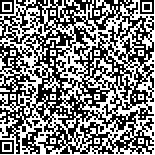| 本文已被:浏览 501次 下载 657次 |

码上扫一扫! |
|
|
| 甘草地上部分活性部位的急性毒性和长期毒性实验研究 |
|
刘海帆1, 冀祖恩2,3, 彭一峰2,3, 张丽2,3, 孙琰琴2,3, 罗恒磊2,3, 张薇2,3
|
|
1.中国中医科学院中药研究所, 北京 100700;2.新疆甘草及制品研究重点实验室, 库尔勒 841011;3.新疆全安药业股份有限公司, 库尔勒 841011
|
|
| 摘要: |
| [目的] 探索甘草地上部分活性部位对小鼠的急性毒性及大鼠的长期毒性,评价其安全性,为合理开发利用甘草地上部分资源以及临床应用提供可靠的理论依据。[方法] 甘草地上部分活性部位33.2 g/kg灌胃给予昆明种小鼠,24 h内两次(间隔5 h)经口灌胃给予受试物,持续观察14 d内小鼠的急性毒性反应;SD大鼠随机分为对照组和甘草地上部分低、中、高剂量组,按8.3、16.6、33.2 g/kg剂量连续灌胃甘草地上部分活性部位90 d,观察大鼠的一般状况,并分别于给药后45、90 d进行血液学指标检测与血清生化指标检测,给药后90 d进行大体解剖及病理学检查,观察甘草地上部分活性部位的长期毒性反应。[结果] 急性毒性实验中小鼠的一般状态、饮食、分泌物、排便未见异常,无小鼠死亡,肉眼尸检心、肝、脾等主要脏器组织未见明显异常;长期毒性实验中,各组大鼠与对照组比较,一般状况、血液学及血清生化指标未见明显差异;病理检查未见主要脏器组织形态学改变。[结论] 甘草地上部分活性部位无急性毒性和长期毒性,在治疗剂量范围内用药安全性高。 |
| 关键词: 甘草地上部分活性部位 急性毒性 长期毒性 |
| DOI:10.11656/j.issn.1673-9043.2023.05.11 |
| 分类号:R285.5 |
| 基金项目:国家重点研发计划项目(2018YFC1706500)。 |
|
| Study on the acute and long-term toxicity of the aerial active parts of Glycyrrhiza uralensis |
|
LIU Haifan1, JI Zuen2,3, PENG Yifeng2,3, ZHANG Li2,3, SUN Yanqin2,3, LUO Henglei2,3, ZHANG Wei2,3
|
|
1.Institute of Chinese Materia Medica, China Academy of Chinese Medical Sciences, Beijing 100700, China;2.Xinjiang Key Laboratory for Research of Licorice and Products, Korla 841011, China;3.Xinjiang Quan'an Pharmaceutical Co. Ltd., Korla 841011, China
|
| Abstract: |
| [Objective] To explore the acute toxicity of the aerial parts of the aerial active parts of Glycyrrhiza uralensis on mice and the long-term toxicity on rats,and evaluate its safety,so as to provide a reliable theoretical basis for the rational development and utilization of the aerial active parts of Glycyrrhiza uralensis and its clinical application. [Methods] The aerial active parts of Glycyrrhiza uralensis (33.2 g/kg) was intragastrically administered to Kunming mice,and the test substance was intragastrically administered twice within 24 h(at an interval of 5 h). The acute toxic reactions in mice within 14 d were continuously observed. SD rats were randomly divided into the control group and low,medium,and high dose groups. The aerial active parts of Glycyrrhiza uralensis were intragastrically administered at the doses of 8.3,16.6 and 33.2 g/kg continuously for 90 d to observe the general condition of the rats. Hematology and serum biochemical indicators were detected 45 and 90 d after the administration,respectively. Gross anatomy and pathology were performed 90 d after the administration to observe the long-term toxic reaction of the aerial active parts of Glycyrrhiza uralensis. [Results] In the acute toxicity test,no abnormality was found in the general state,diet,secretion and defecation of mice,no mouse died,and no obvious abnormality was found in the gross autopsy of heart,liver,spleen and other major organ tissues. In the long-term toxicity test,no significant difference was found in general conditions,hematology and serum biochemical indicators between the groups and the control group. No morphological changes of major organs were found in pathological examination. [Conclusion] The aerial active parts of Glycyrrhiza uralensis has no acute or long-term toxicity,and it is safe to use within the therapeutic dose range. |
| Key words: aerial active parts of Glycyrrhiza uralensis acute toxicity long-term toxicity |
